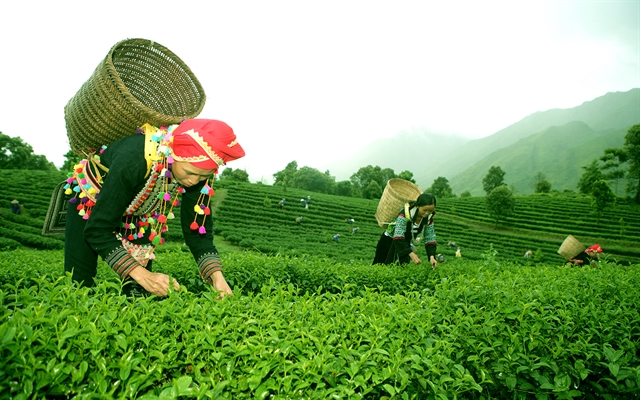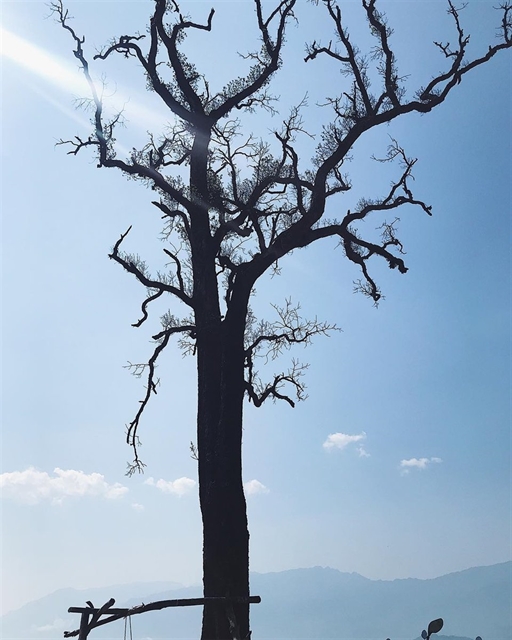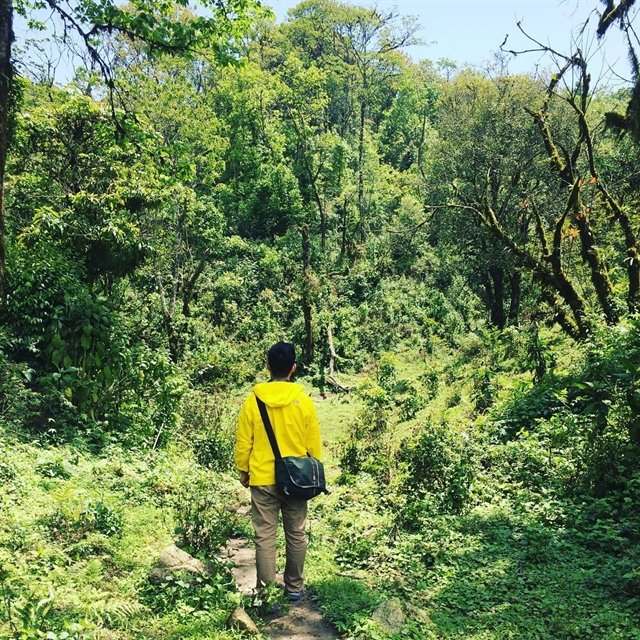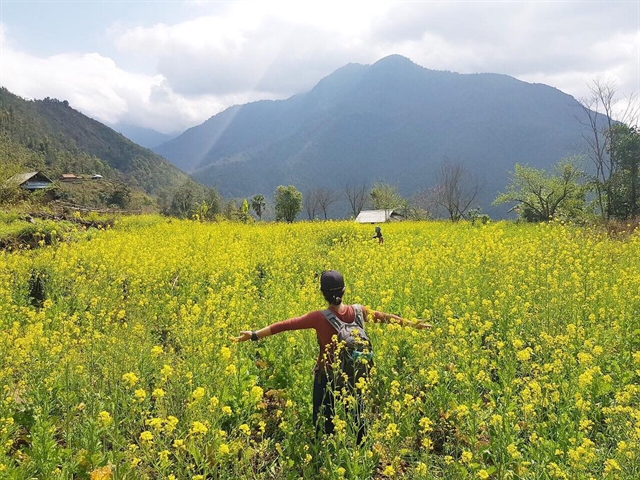[ad_1]
Trần Hoàng Nam
The northern province of Lai Châu, situated 450km northwest of Hà Nội, is not as popular a destination as Sa Pa in Lào Cai Province or Mộc Châu in Sơn La Province. Yet it has a primitive and mysterious beauty that is well worth exploring.
Local authorities have taken advantage of the diverse culture of 20 ethnic groups to develop homestays as a special tourism product.

Tẩn Thị Quế, director of Lai Châu Department of Culture, Sports and Tourism, said the authorities understand the demands of most tourists, especially foreign tourists, who prefer a natural environment and to experience local life.
The authorities have focused on community tourism areas like Sin Suối Hồ Culture-Tourism Village and Vàng Pheo Village in Phong Thổ District; Sì Thâu Chải Village, Nà Khương Village; Hon Village in Tam Đường District; San Thàng 1 Village and Gia Khâu 1 Village in Lai Châu City.
“Standard homestays have served tourists together with art troupes to entertain visitors. Furthermore, traditional handicrafts are restored like making the traditional cakes of the Giáy ethnic minority group in San Thàng Commune, traditional embroidery weaving handicraft of the Lự group in Hon Village, traditional steel forging of the Mông group in Sin Suối Hồ Village and making herbs for bathing of the Red Dao group in Sìn Hồ Commune,” she said.

Quế said various traditional festivals and games have been held after a long time of being stopped.
She said there are now 11 community tourism sites with 30 families offering homestay services.
Trần Đức Long, chairman of Lai Châu Tourism Association said locals have contributed a lot to the development of community tourism.
They have better knowledge about improving hygiene, the landscape, planting more flowers and building more public toilets.
Quế said to provide qualified human resources to serve tourists, the department has opened training classes for locals using capital support from the EU and the province.
Locals have been trained with various skills to receive guesses in homestays, presentation skill, cooking skills.
Quế said the province has also trained tourist guides and developed safe agriculture products including providing clean meat, food and vegetables.
She said the department has also enhanced PR work on websites, news sites, and social networks like Facebook, Facebook, YouTube and Zalo.
Through his survey, chairman of UNESCO Hà Nội Travel Agencies Club, Trương Quốc Hùng, found that most of the families offering homestay services in Lai Châu have offered food and art performances.
He thought locals should add more services like souvenirs and entertainment, as well as offering guests chances to experience farming, making handicraft products and exploring ethnic minority heritage.
“Except some impressive community tourism sites like Sin Suối Hồ Village, community tourism services in Lai Châu are still simple and lack creativity,” he noted.
“I think the typical features of ethnic groups like houses on stilts and traditional cultural activities at homestays have not been properly preserved and created stable trademark,” he said.
Quế said the locality has changed very slowly from agriculture to tourism.
“The infrastructure, traffic system from city to villages, accommodation and toilets are not of the same quality,” she said.
To deal with those disadvantages, local authorities should invest more in infrastructure, she suggested.
Quế said next year, the department will open more training classes for families and further promote PR to advertise homestays as a main tourism product of the locality.
She said the local tourism sector will also work more with travel agencies to create attractive tourism products.
“I hope travel agencies actively share experience dealing with community tourism with locals in the process,” she said.
Popular destinations in Lai Châu
Ô Quy Hồ Pass
The pass is located in the northwestern route linking Lai Châu and Lào Cai Province, which is recognised as the longest pass in Việt Nam at 50km.
Sì Thâu Chải Village

Located some 6km from the centre of Tam Đường District, the village is home to many people of the Dao ethnic minority group.
With breathtaking scenery, fresh air and cultural features, Sì Thâu Chải Village is a popular spot.
Mường Than rice field
The field is located in Than Uyên District. Its beauty changes every season. In summer when farmers pour water into the field, it looks like a giant mirror reflecting the sky and mountains. In autumn when the rice gets yellow, it is like a painting of yellow waves.
Putaleng Peak
The 3,049m-high peak is in the range of Hoàng Liên Sơn.
Trekkers like to conquer the peak along the streamline up to its source, passing dangerous slopes and giant stones.

Bạch Mộc Lương Tử mountain
Though it’s not as high as Putaleng, Bạch Mộc Lương Tử is also worth checking out. It is as challenging as Putaleng, according to many trekkers. They have to trek on 30km route through various kinds of topography. Their reward is a breathtaking view over a sea of clouds below.
When to visit Lai Châu
From December to March the area hosts many wild flowers and locals hold various traditional festivals.

September to October is also good period to explore Lai Châu. During that time, rice matures and the fields are filled with bright yellow.
How to get there
By bus
You can buy tickets at Mỹ Đình Bus Station or book tickets on the bus routes of Khánh Thủy bus and Anh Tú bus companies.
The bus normally stops in Than Uyên, Mường Tè, Mường So, Sìn Hồ, Pa Há or Dào San districts.
Tickets range between VNĐ200,000 (US8.6) and 400,000 ($17.2) depending on the bus quality.
By bike
If you want to hire a bike, take a bus to Sa Pa and hire a bike there.
With a bike, you can go by two routes: Hà Nội – Lào Cai – Sa Pa – Ô Quy Hồ – Lai Châu or Hà Nội – Phú Thọ – Yên Bái – Mù Cang Chải – Lai Châu. VNS
[ad_2]
Source link
